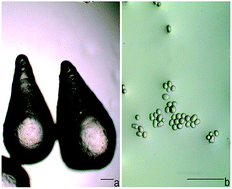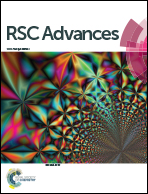Nanoparticles change drop breakup mechanism to obtain icecream-like microparticles in inverse suspension polymerization
Abstract
The inverse suspension polymerization of acrylamide and methacryloxy ethyltrimethyl ammonium chloride was performed in white oil with sorbitan monooleate as dispersant and 2,2′-azobis[2-(2-imidazolin-2-yl)propane]dihydrochloride as initiator. The bimodal size distribution of the produced microspheres was defined by microscopy for different initiator or dispersant concentrations. This bimodal distribution is closely related to the breakup mechanism of the liquid drops in the turbulent flow field. In dilatational rheology tests, the addition of nanoparticles into the suspension system decreased the elasticity modulus of the interface film between the monomer drop and the white oil, making it fairly brittle. This resulted in brittle breakup of the drops into two subdrops without any small concomitant particles. By this mechanism change, the microparticles in the icecream-like shape were obtained in the polymerization system with 0.4% initiator and near ellipsoid particles were obtained with 0.1% initiator. In addition, the addition of nanoparticles to inverse suspension polymerization makes it possible to change the bimodal distribution into unimodal and thus decreases the size distribution of the microspheres.


 Please wait while we load your content...
Please wait while we load your content...